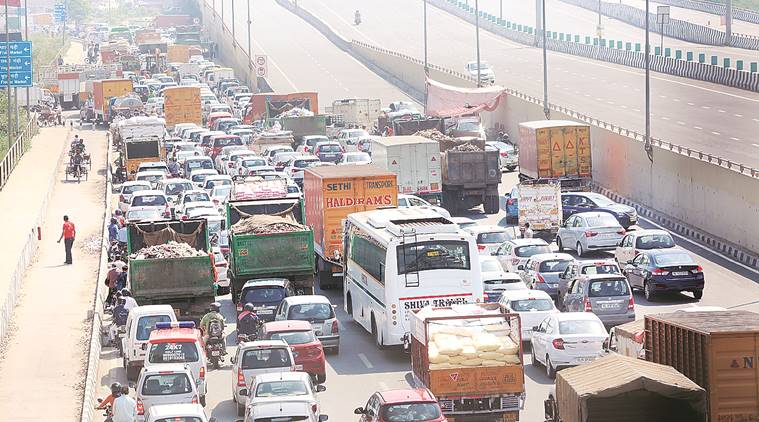 At UP-Delhi border. Noida has shut its border since April 21
At UP-Delhi border. Noida has shut its border since April 21
Till April 19, the idea of Delhi-NCR as a singular entity, spanning the national capital and 23 districts across Uttar Pradesh, Haryana and Rajasthan was a robust one — at least on paper.
April 21 marked the beginning of its unravelling, with the Ghaziabad administration sealing borders with Delhi. A day later, Gautam Budh Nagar, under which Noida and Greater Noida fall, too shut the capital out.
Ten days later, the Haryana government announced curbs on entry to Gurgaon and other districts bordering Delhi. While Noida has kept its borders shut ever since April 21, Ghaziabad offered some relaxations on May 22, only to reseal on May 26.
The Gurgaon administration announced lifting of all curbs from the first week of June — only to be greeted with Delhi’s decision to lock borders from June 1.
The Covid-19 pandemic has effectively upended the vision of a “balanced and harmonised” development of Delhi and NCR — for which the National Capital Region Planning Board came into existence in 1985 — like never before.
The board, which comes under the Ministry of Housing and Urban Affairs, has entire Delhi, 13 districts of Haryana, seven of UP and two of Rajasthan under its fold, covering an area of about 55,000 sq km. The rationale behind its creation was to “promote balanced and harmonised development of the region, and to avoid any haphazard development”, official records show.
The 17-member body, having the L-G of the Delhi, and various CMs and Chief Secretaries on board, is supposed to create regional plans, coordinate enforcement, arrange and provide funds, among other functions.
Former Delhi Chief Secretary Shailaja Chandra believes there has been a huge neglect of planning, foresight and concern for citizens who were supposed to benefit from the entire NCR planning concept. “The NCR Planning Board has been a low-key drawing board kind of body. The organisation or its parent ministry should have visualised the inter-regional and intercity policing, traffic and commuting needs and planned for them decades ago. The states of UP, Haryana, partially Rajasthan and the UT of Delhi should have been bound to have planned for this collectively. Toll bridges and paid flyovers have functioned as a source of revenue and none of these bodies did any sort of interstate or intercity consulting keeping commuter convenience in mind.
“The chaos has only exploded during lockdown but it must be addressed professionally and not left to the pique and ultimatums of individual states. Satellite imagery and artificial intelligence has to be used based on time of the day movement of different kinds of vehicles. All states should have cross-border agreements on incentivising use of public transport and restricting congestion at peak hours,” Chandra told The Indian Express.
However, Ghaziabad District Magistrate Ajay Shankar Pandey believes the present situation must be looked at from the context of the pandemic. “All agencies in NCR are working towards eradicating this disease. With regard to the borders, there is no denying that there are some points which are not common to all. The means adopted by Ghaziabad are different from that in Delhi. But this is temporary. In the months to come,… we will get back on the track of common development of the region. The recommendations and decision by the NCR planning board and the government will be abided by and we will implement it without any friction,” Pandey said.
Amit Khatri, the Deputy Commissioner of Gurgaon, said his administration had now done away with the border curbs, which had to be imposed keeping aspects of public health in mind. “We have avoided the use of the term sealing. For all practical purposes, we tried to regulate border movement and all those attached with essential services and holding e-passes were allowed entry… We tried to balance the health and economic needs,” Khatri said.